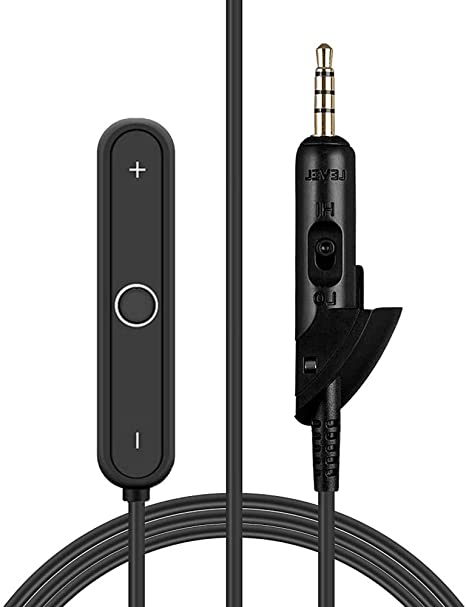HiFiGo Hisenior Mega5Est Bass+ Enhanced Edition: Unleash the Thunder
Update on Aug. 4, 2025, 8:15 a.m.
Music, at its core, is a paradox. It begins as cold, sterile data—a stream of ones and zeros stored on a device. Yet, through a remarkable process of transformation, it emerges as something that can stir the deepest of human emotions. This alchemy, turning silent data into profound feeling, is not magic, but a triumph of science and engineering. To truly understand it, we must follow the signal on its journey. Using the Hisenior Mega5Est Bass+ as our map, let’s trace this path from a digital file to a fully formed auditory sensation in the brain, and in doing so, demystify the intricate technology that makes high-fidelity sound possible.

The Conductor: Purity in the Signal Path
Our journey begins the moment ‘play’ is pressed. The digital data is converted into a fragile analog electrical signal. The very first challenge is to transport this signal to the earphones with absolute purity. This is where the cable, often overlooked, plays its crucial role as the first conductor in our sonic orchestra. It’s not “just a wire”; it’s a meticulously engineered conduit.
The “MANTA” cable accompanying the Mega5Est Bass+ is built from UP-OCC (Ultra-Pure Ohno Continuous Cast) copper. To grasp the significance of this, one must visualize standard copper wire at a microscopic level. It’s composed of countless individual copper crystals, and the boundaries between them act like tiny, chaotic hurdles for the electrical signal, causing minuscule distortion and loss. The UP-OCC process, developed in Japan, effectively creates a single, continuous copper crystal, removing these boundaries. This provides an almost perfectly smooth highway for the audio signal to travel, preserving its integrity.
Furthermore, this ultra-pure copper is plated with silver. In the world of metals, silver is the undisputed champion of electrical conductivity. This silver plating is particularly beneficial for high frequencies, which, due to a phenomenon known as the “skin effect,” tend to travel along the surface of a conductor. By providing a highly conductive surface, the silver plating ensures that the most delicate treble details in our signal complete their journey unharmed.

The Gatekeeper: The Art of the Crossover
Having arrived at the earpiece, the pristine, full-range signal now faces its most complex logistical challenge. It must be intelligently divided and distributed among three different types of drivers, each with its own unique specialty. This critical task falls to the four-way integrated crossover, the unsung hero of any multi-driver system.
Imagine the crossover as the meticulous gatekeeper or traffic cop of the audio world. It uses a network of electronic components like capacitors and inductors to create precise filters, channeling specific frequency bands to the drivers best equipped to handle them. Low frequencies are sent one way, mid-range another, and high frequencies a third. The “four-way” designation indicates a sophisticated level of control, creating distinct paths to ensure that, for instance, the deep rumble of a bass guitar doesn’t try to force its way through a driver designed for the delicate shimmer of a cymbal. Without this meticulous sorting, the result would be a chaotic sonic mess. The crossover’s ultimate goal is coherency—ensuring that the output from all these different drivers blends together seamlessly into a single, unified sonic tapestry.

The Orchestra: A Trio of Transducer Philosophies
With the signal expertly divided, it’s time for the true act of creation: turning electricity into physical sound waves. This process of energy conversion is performed by transducers, and the Mega5Est Bass+ employs a trio of distinct transducer philosophies, each a master of its domain.
The foundation of the orchestra is the 10mm dynamic driver, the traditional workhorse of bass reproduction. Its operation is a beautiful application of electromagnetic induction. The audio signal energizes a voice coil attached to a diaphragm, causing it to move back and forth within a magnetic field, pushing air like a piston. Because of its ability to move a significant volume of air, the dynamic driver excels at generating the powerful, resonant low frequencies that we not only hear but also feel.
Handling the intricate midrange are two Knowles balanced armature drivers. The balanced armature (BA) is a marvel of miniaturization, originally pioneered for hearing aids where clarity is paramount. Instead of a large, moving diaphragm, a BA uses a tiny reed (the armature) balanced between two magnets. The audio signal causes this reed to pivot, and its minute movements are transferred to a very small, stiff diaphragm. Its low mass and controlled motion give it incredible speed and precision, allowing it to render the complex textures of a human voice or the sharp attack of a snare drum with breathtaking accuracy.
Finally, for the highest frequencies, we encounter the most exotic technology of the trio: two SONION electrostatic (EST) drivers. An EST driver operates on an entirely different principle. It uses an incredibly thin, nearly massless diaphragm—often just a few microns thick—coated with a conductive material and placed between two perforated metal plates (stators). A high, constant voltage is applied to the diaphragm, and the fluctuating audio signal is applied to the stators. This creates a shifting electrostatic field that moves the diaphragm with almost zero inertia. Its ability to accelerate and stop on a dime is unparalleled, allowing it to reproduce the faintest, most ethereal treble details and harmonics, extending the perceptible soundstage well beyond the limits of human hearing to 50kHz.
The Blueprint: Tuning for the Human Brain
Having assembled a flawless technical orchestra, there is one final, crucial element: the musical score itself. How should the instrument sound? This is where physics meets psychology, in the field of psychoacoustics. Engineers can’t just aim for a “flat” frequency response, because the human ear isn’t a perfectly flat microphone. Our hearing is uniquely sensitive to certain frequencies and less so to others, a phenomenon mapped out by the famous Fletcher-Munson curves.
This is why the Harman Target Curve is so important. It’s not an arbitrary standard, but a scientifically derived blueprint for a sound signature that extensive, double-blind listening tests have shown a majority of people perceive as natural and pleasing. It accounts for the natural resonances of the human ear and our inherent preferences. The Hisenior Mega5Est Bass+ uses this curve as its foundational tuning, ensuring its core sound is balanced and accurate from a psychoacoustic perspective.
Yet, it makes one bold, calculated deviation: an added 5dB boost to the sub-bass region. This is a masterstroke of tuning aimed squarely at a known psychoacoustic quirk. Our ears are least sensitive to very low frequencies, especially at moderate listening volumes. This targeted boost compensates for that, ensuring the deep, foundational rumble of a bassline or the cinematic impact of an explosion is not just heard, but felt, without overwhelming the mid-range with muddy, boomy bass. It’s an engineered solution to deliver a subjectively more powerful and satisfying experience, while maintaining objective clarity across the rest of the spectrum, as verified by its low distortion metrics.
From a simple stream of data, our signal has journeyed through a gauntlet of specialized technology. It was preserved by material science, divided by electronic artistry, and reborn as sound by three distinct physical principles, all guided by a blueprint designed for the human mind. The result is not just noise, but a cohesive, articulate, and emotive experience. To understand this journey is to understand that high-fidelity audio is not an accident. It is a beautiful, intentional symphony of science.



























































